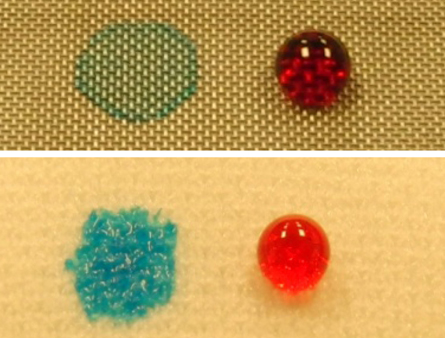- More than 2 years ago
Oil and water’s disdain for each other is legendary, but once forced to comingle they’re nearly impossible to separate. Now scientists have developed a specialized filter that cleanly separates the two, allowing water to pass through and leaving oil behind.

Such filters could prove useful for cleaning up oil spills or cleaning water at treatment plants.
A simple setup using the new filter successfully removed more than 99.99 percent of oil from an oil-water mix, researchers report online August 28 in Nature Communications.
Oil and water both stick to their own, staying on opposite sides of the room at a molecular cocktail party. But add a chemical called a surfactant — molecules that are partly attracted to water and partly attracted to oil — and you’ve got a social lubricant that forces water and oil to mingle. Once this socializing happens, it’s difficult to undo.
One way to get them apart is with a filtering membrane coated with water-hating molecules — such membranes allow oil through, but not water. Think of a nonstick Teflon pan, says materials scientist Anish Tuteja, who led the new work. Oil moves smoothly across such surfaces but water beads up. But these filters require energy to force stuff through them, and they often become fouled after a few hours. Also, water is denser than oil, so it can sit on top of such filters, making it harder for oil to get through.
The new membrane is the opposite of Teflon, allowing water to pass through it, but not oil. And it works with gravity alone.
“This is nice work,” says chemical engineer Di Gao of the University of Pittsburgh, who wasn’t involved in the research. “It’s not too hard to make a surface that repels water but likes oil — but to do it the other way is hard.”
To make their membranes, Tuteja and his colleagues start with a filter scaffolding — this can be wire screen, filter paper or a piece of polyester fabric. Then the researchers dip the screen in a blend containing two compounds: POSS (fluorodecyl polyhedral oligomeric silsesquioxane) and PEGDA (polyethylene glycol diacrylate). A minute or so under ultraviolet light cures the membrane, and it’s hardened and ready to use.
When a water-oil mix is poured onto the filter, the PEGDA is attracted to the water and tries to bond with it, which contorts the surface of the filter on a molecular level, pulling the water through. The oil, which is less dense than water, stays on top.
“It’s a very counterintuitive filter,” says Tuteja, of the University of Michigan.
Tuteja and his colleagues put the new filter into a simple device to separate oil and water. When a mixture is poured into the container, water flows through the POSS-PEGDA filter into the bottom of the container. A second, traditional filter allows oil sitting atop the water to be diverted off to the side into a different container. The setup worked quite nicely, separating rapeseed oil and water, for example, and the diesellike hexadecane and water. Instead of requiring vacuums or elaborate setups that use pressure and power to force a mixture through a filter, the new arrangement uses only gravity.
“The research is excellent, the membrane is a feat in itself,” says marine engineer Jerome Milgram of MIT. He adds that it remains to be seen whether such a setup would work in the field. An oil spill in the ocean, for example, might require thousands of hours and thousands of gallons to be filtered.





